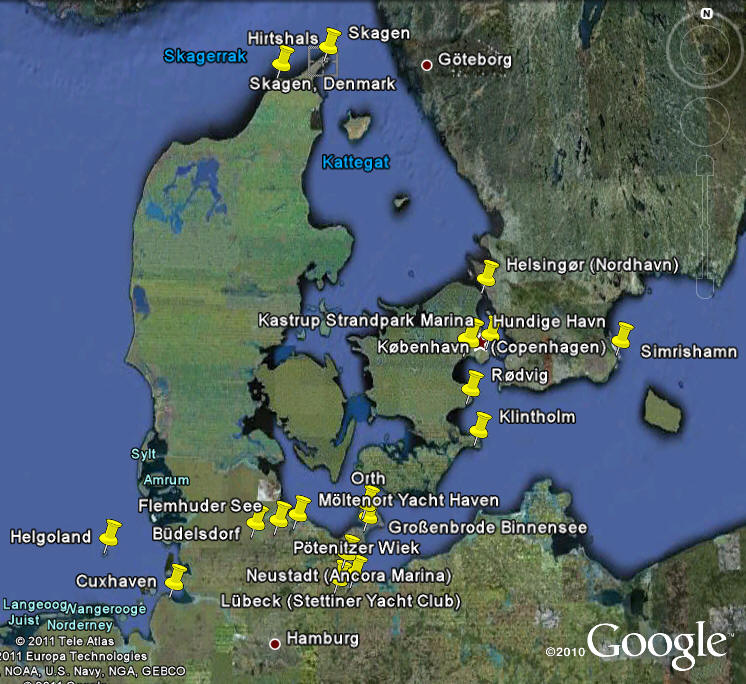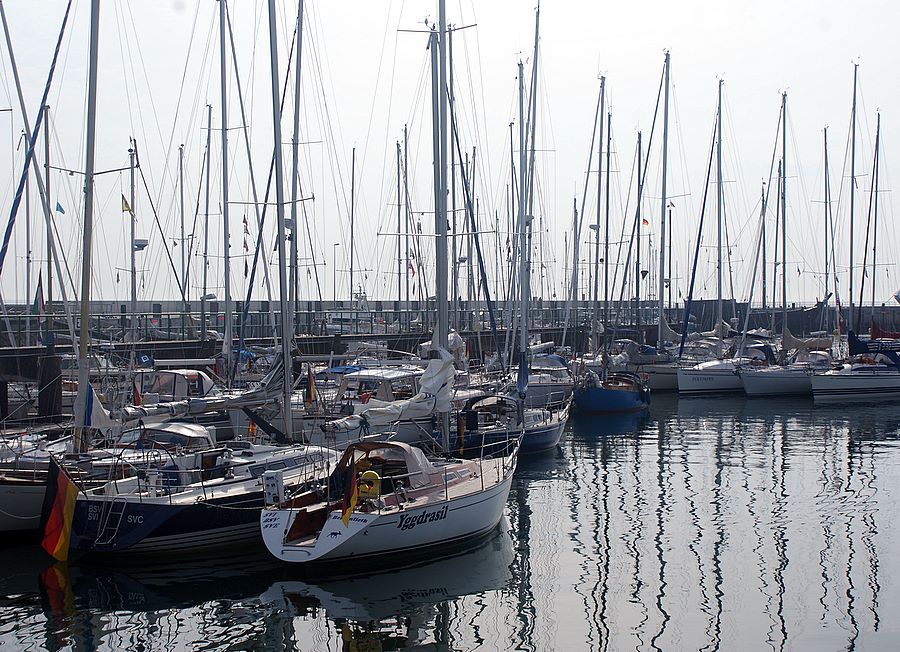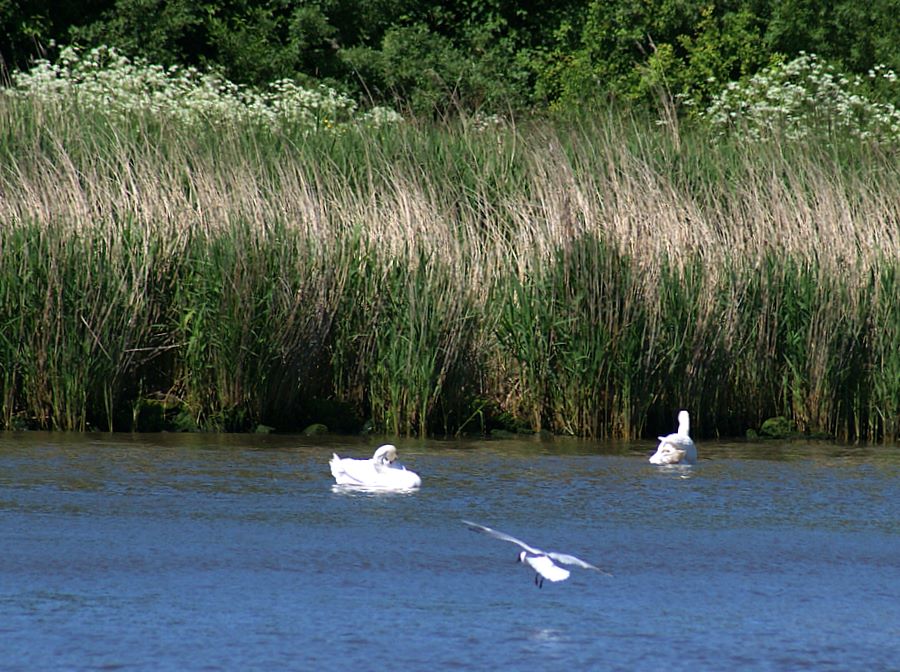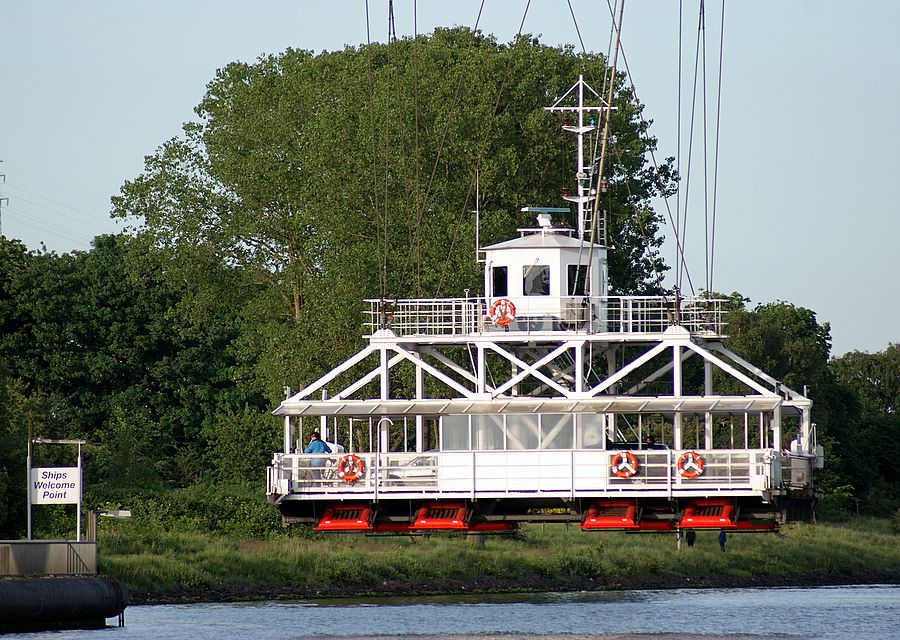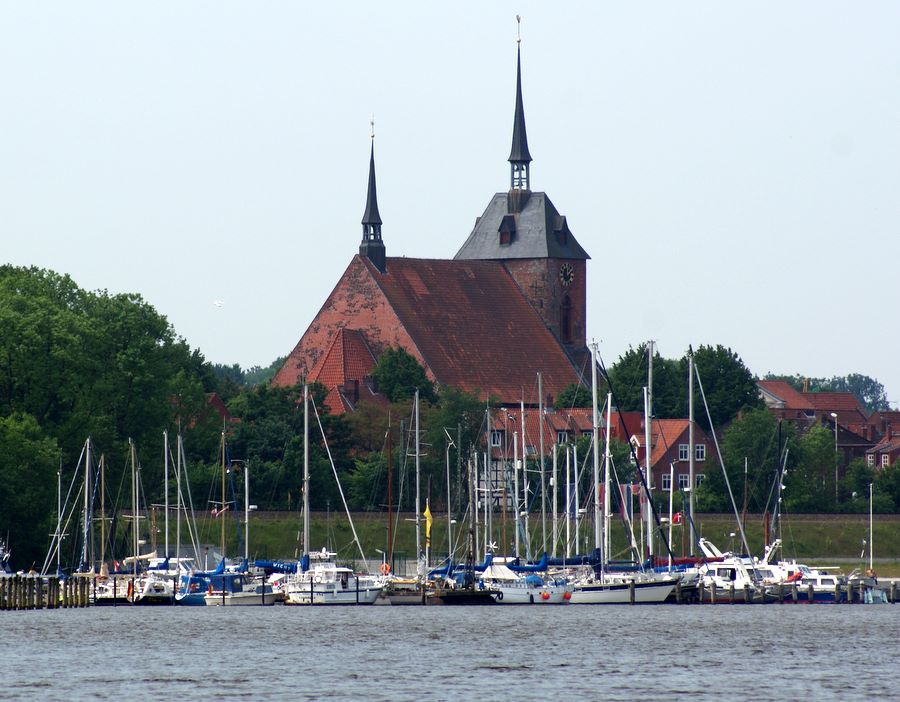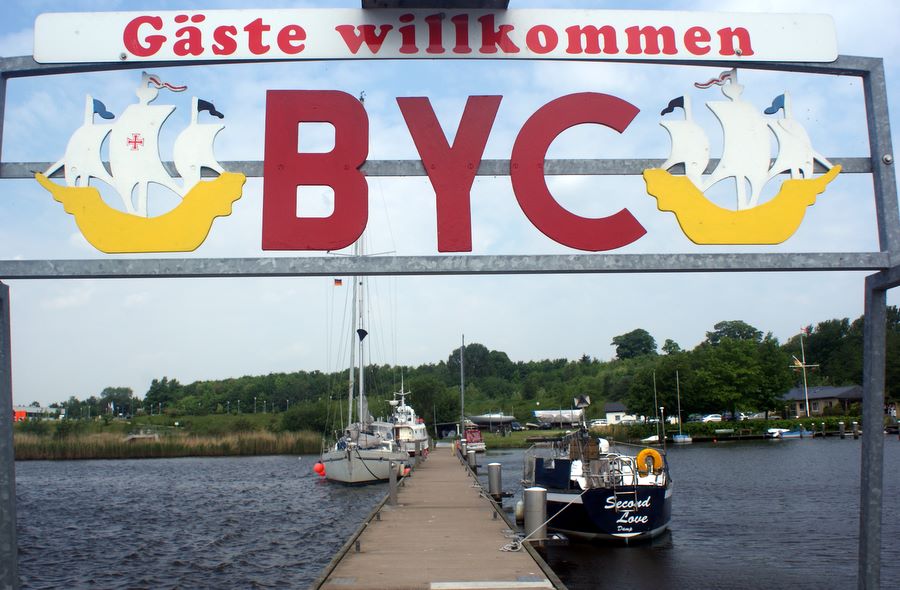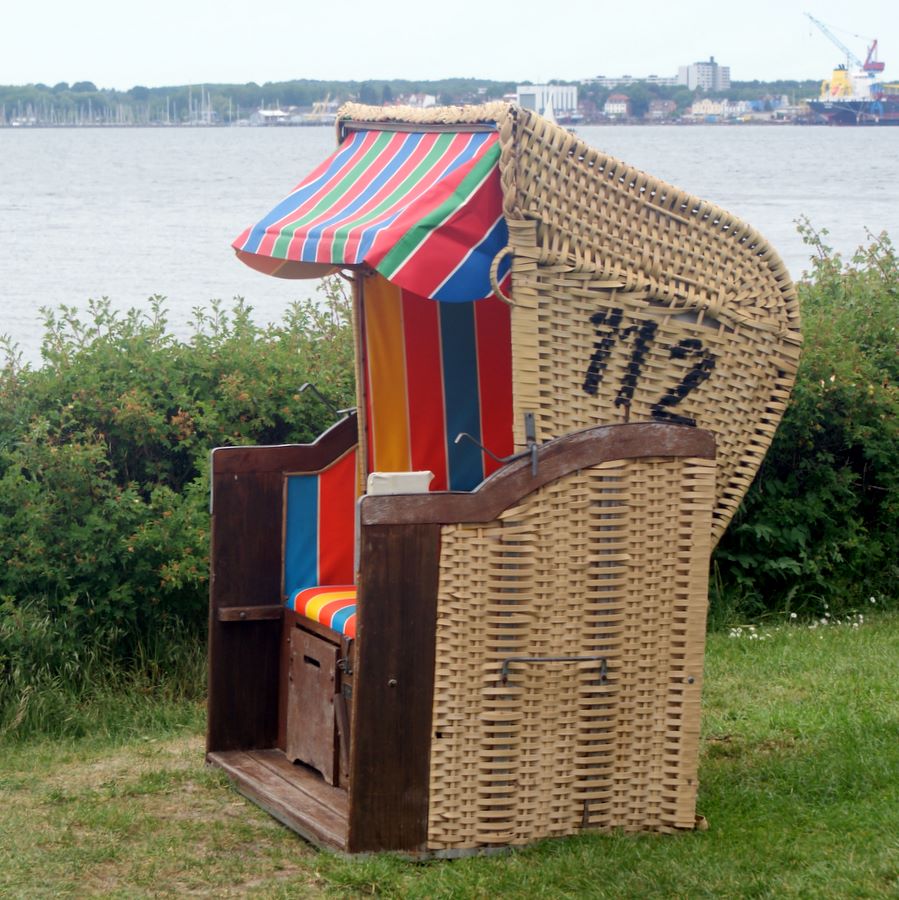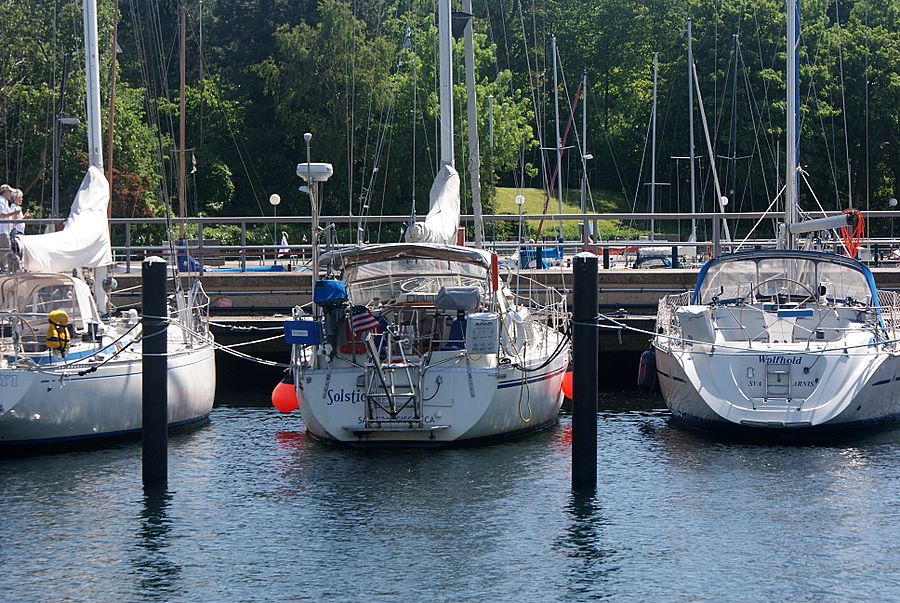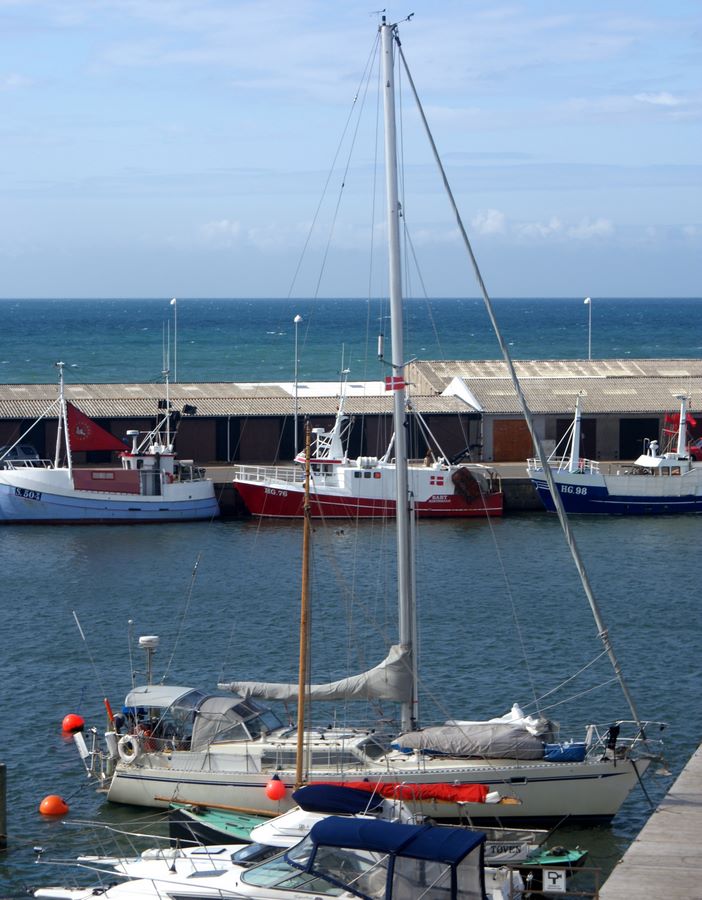Move your mouse over the photos below to enlarge them.
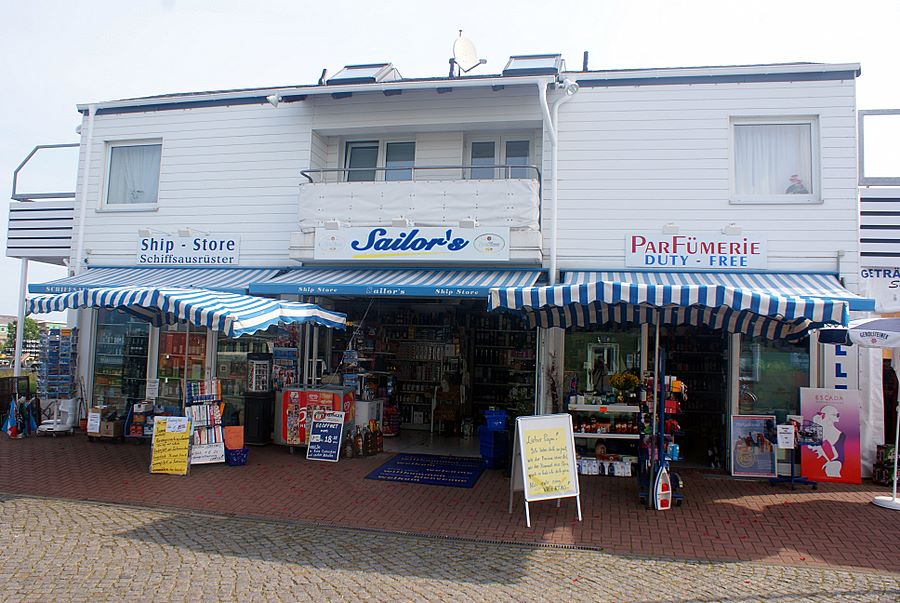
 Duty-free shopping in Helgoland
Duty-free shopping in Helgoland

 All passages lead to Helgoland
All passages lead to Helgoland

 Solstice in the western locks of the Kiel Canal
Solstice in the western locks of the Kiel Canal
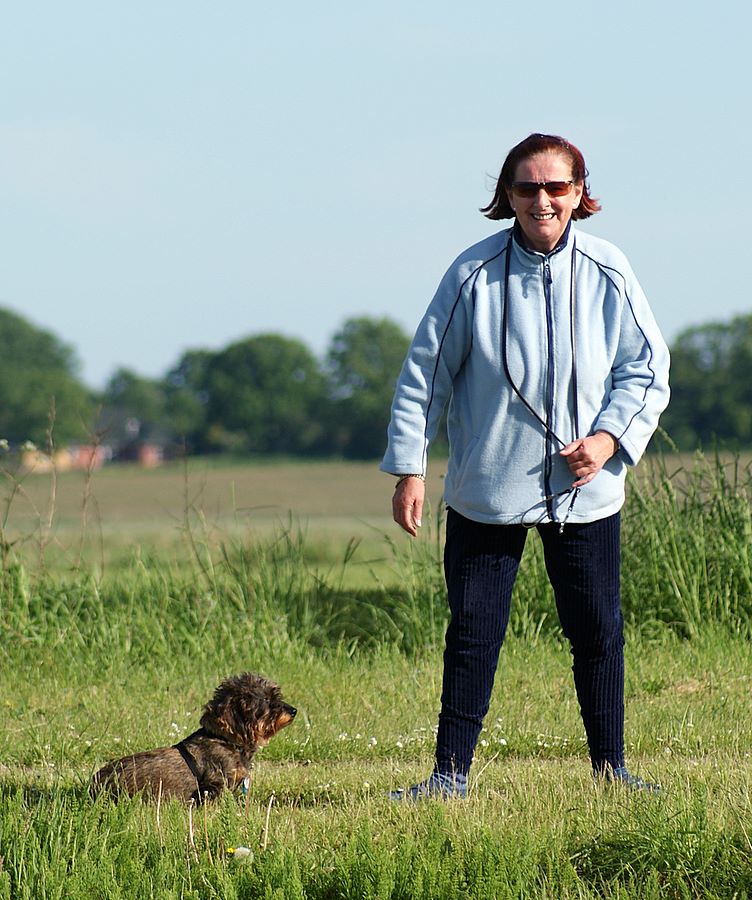
 Dachshund training: good luck with that
Dachshund training: good luck with that
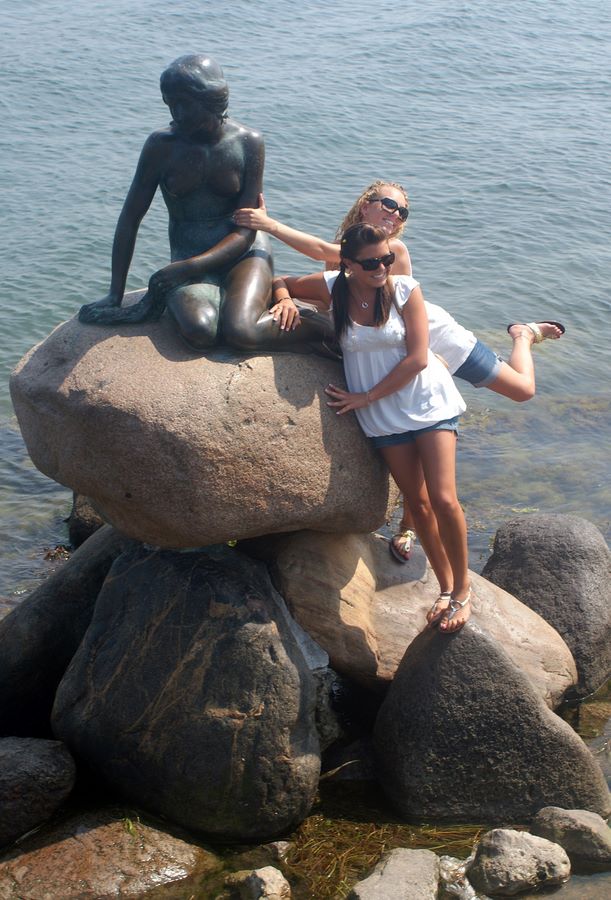
 The Little Mermaid and friends
The Little Mermaid and friends
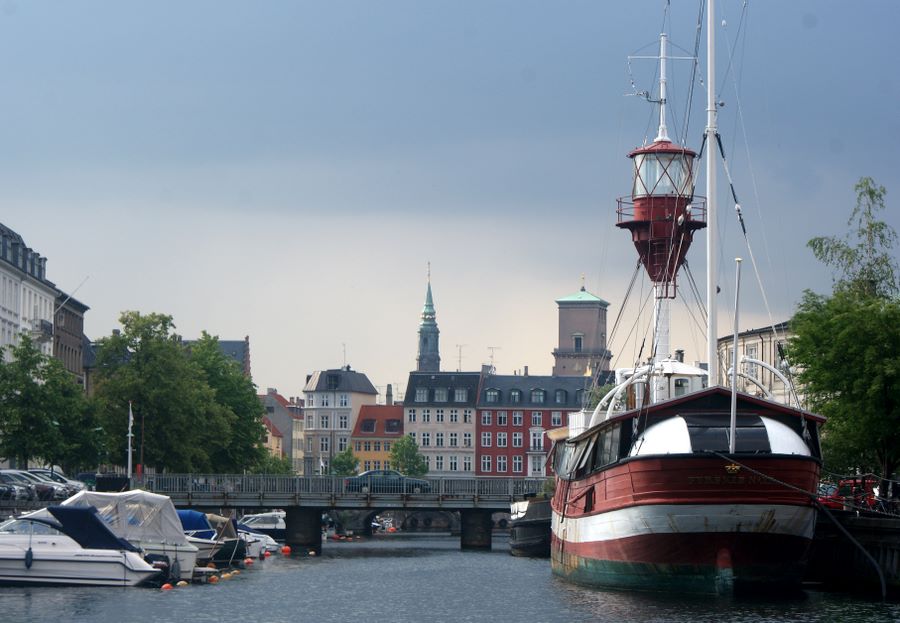
 Lightship on canal in old Copenhagen
Lightship on canal in old Copenhagen
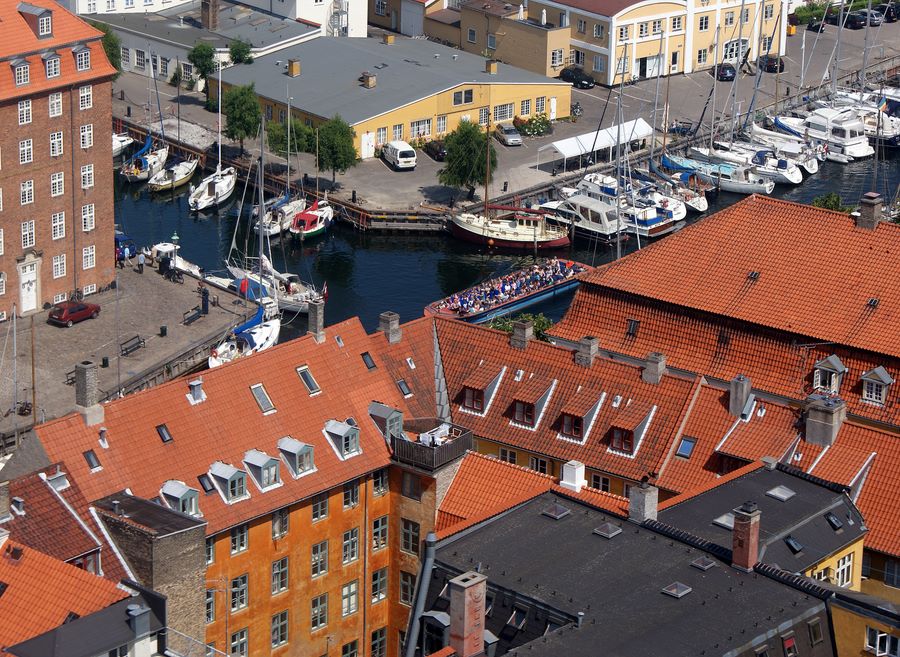
 View of Copenhagen canal tour from the top of Vor Frelsers Kirke
View of Copenhagen canal tour from the top of Vor Frelsers Kirke
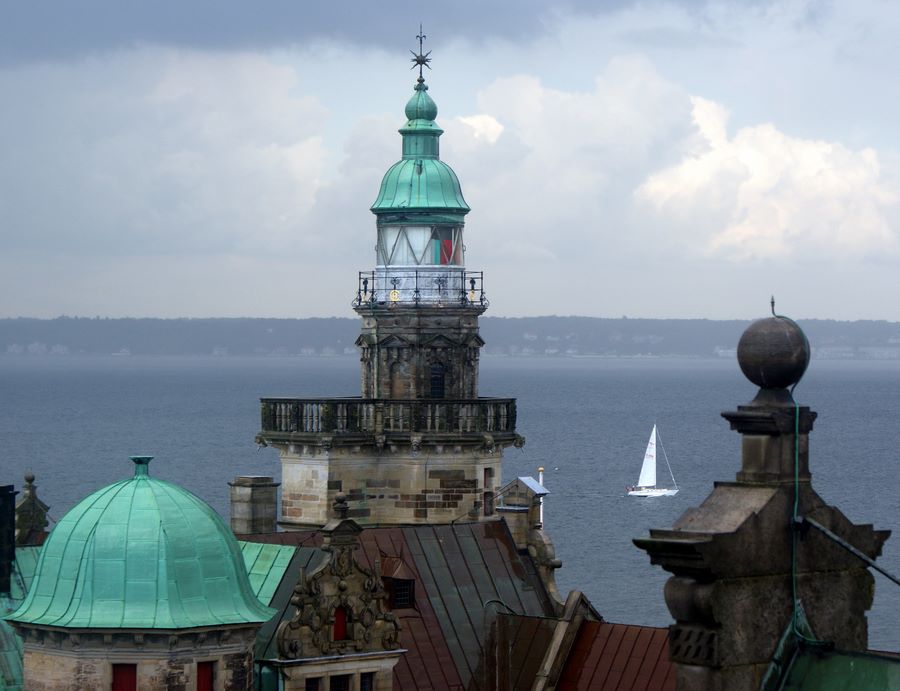
 View across to Sweden from the ramparts of Kronberg castle in Helsingør
View across to Sweden from the ramparts of Kronberg castle in Helsingør
Letter published in SSCA Commodores' Bulletin, June 2011
Germany, Denmark and a touch of Sweden 2009
Although this letter is primarily about the Baltic, it begins and ends at Helgoland in the North Sea and passes through the Kattegat and Skagerrak. The two months we spent in the Baltic gave us time only to begin to explore this northern sea. Of the nine countries that border it, we visited only three: Germany, Denmark and Sweden. We know that other members of SSCA have spent more time here, but there isnít a lot of overlap between the places we visited and other letters (from Polaris in 2006 and Hello World in 2009) that have been published in the Bulletin.
Guides, charts, online resources and general information
These are the guides we used:
Imray Cruising Guide to Germany and Denmark by Brian Navin. This guide is fairly sketchy, but itís one of the few we know of that is available in English. We used it only for general planning since it didnít really have details.
Sejlerens, a very useful free marina guide written in Danish and German with a little English in some volumes. The various volumes cover most of the Baltic. A reading knowledge of German is helpful, but not strictly necessary since the marina information is in tables with chartlets.
Imrayís The Baltic Sea has been newly updated in 2010. We didnít buy it for our trip because the edition available at the time was pretty old, and we knew we would only be visiting the western Baltic.
We use Navionics electronic charts with our chart plotter, but we also picked up a Danish chart pack. The Danish and German charts are excellent and readily available at chandleries in Europe and probably online as well.
We found that some knowledge of German was very useful in Germany because it seemed to us that fewer people spoke English there than in other countries weíve visited. Perhaps that was partly because we stayed in smaller harbors and yacht clubs.
Formalities
Customs and immigration: Although non-EU boats are technically supposed to check in at each country, we didnít. In Germany the federal police checked our passports and boat document while we were anchored. Although we were beyond our Schengen limits, they either didnít notice or didnít care. A customs official also checked our papers in Helgoland. In Sweden we actually tried to find someone official to notify of our presence, but without success. In Denmark we saw no officials; in fact, in one marina we couldnít even find marina staff and paid by machine.
Red/green markers: Many yacht clubs and marinas here use a system of red and green markers. If the marker or tag is red, it is occupied, and you canít dock there. The green tags are open to visitors on a first come basis. Check the tag, though. Sometimes dates are included for the return of the regular occupant.
Day signals: These are almost mandatory in northern Europe but rarely used in the States and other places we've been. When you're motor-sailing (motoring with sails up), you're supposed to fly a black cone with the point down. At anchor you fly a black sphere. These signals go somewhere toward the front of the boat. (You can see the motoring cone in some of the photos because we motored a lot and often forgot to take it down when we docked.)
Places we visited
Helgoland
Helgoland is a holiday island. It has some beaches, clean water and air, hotels, restaurants, and VAT/duty-free shopping. Both times we stopped here, we were in raft-ups at least five boats deep. During peak season, the raft-ups can extend all the way across the yacht harbor, and there are buoys in the middle to lend stability to these monster lines of boats.
There is also an anchorage within the outer breakwater. The harbor fee is the same whether youíre at anchor or in a raft-up at the dock. There was no wireless Internet here when we visited. By the way, at least one of the harbormasters claims to speak no English.
Cuxhaven (Segler-Vereinigung Yacht Club)
This seems to be a nice resort town, but for us it was just a stopover on our way to the Kiel Canal. The office hours of the yacht club are 8-10 a.m. and 4-6 p.m., and there is a machine where you can pay to get electricity in the off-hours. In reality, the hours arenít regular, but the harbormaster does speak English, and there are finger docks, so you can side-tie. Look for the signs that designate the size of boat for the various areas. We were in a spot reserved for larger boats first and had to move. This is also the first place we saw the red and green markers. Wireless Internet is available here for a fee.
With the current, our motor and some wind, we made good time the next morning, reaching at locks of the Kiel Canal around 1:00 p.m. Youíre supposed to call for permission to transit when you get there. We were the last into a full lock, and we rafted up with a Danish boat, saving us from dealing with the extremely low floating tie-offs in the lock this time.
The Kiel Canal is pretty. It is lined with trees with bicycle paths on both sides. All of the bridges are high with at least 40-meter clearance.
Rendsburg (Büdelsdorfer Yacht Club)
On our way to the marina at Rendsburg, we passed a yacht club on the other side of the lake that said Gäste willkommen (guests welcome) and had a nice long, mostly empty guest dock. All that was left at the Rendsburg marina were mooring boxes. Boxes consist of two pilings set off from a dock. The idea is to head in or back in, tying off on the pilings as you go so that you stop yourself before you ram the dock, and then you jump off quickly to secure whichever end is toward the dock. (More on box mooring later.) At this point, we had only done it twice with lots of people helping, and we werenít good at it, so it was an easy decision to return to the yacht club.
As we approached BYC (Büdelsdorf Yacht-Club), a woman was standing on the dock to help with our lines and let us know that we should hurry if we wanted to get to the supermarket before closing on a Saturday night. Very nice. In fact, everyone at BYC was very nice, and the rates were outstanding (€1/meter/night plus €1 for power). We used their free loaner bicycles to go exploring, and wireless Internet from the clubhouse at €1/hour also reaches the dock with a good antenna. The club grounds are like a big backyard or small park, and thereís another park across the river. You can see Rendsburg in the distance at the end of the lake. We stayed a couple of nights because we liked it so much, and then we stayed a couple more because of bad weather. In all, this was one of our favorite stops of the summer.
Flemhuder See (anchorage: 54°20.35íN, 009°57.80íE)
Thereís really nothing here, but itís pleasant and safe with good holding. It was a relaxing stop for us before dealing with leaving the canal the next day. There we were again the last into the lock, but there was room for us to tie up without rafting. You pay the canal fee at this lock, and it was a relatively reasonable €35 for us.
Kiel/Heikendorf (Möltenort Yacht Haven)
The yacht and fishing harbor is called Möltenort, but the town itself is Heikendorf. Itís a Baltic resort on the east side of the Kiel fiord across from the locks of the Kiel Canal. The egg-shaped wicker beach chairs are quite picturesque, and a big U-boat memorial is within walking distance.
Itís all box mooring here, and we made a real mess of it in the strong cross winds, even with lots of help, but we didnít damage anything, so it was only embarrassing and nerve-wracking. Once we were settled, we talked with our neighbors about how to moor in boxes and watched lots of other boats doing it. The following is the technique we adopted for going bow first into a box, with some success, as a result of this input:
- Avoid box mooring if possible. If not possible, continue with step 2.
- Put big loops in two long lines. These become your stern lines.
- Put the loop over the upwind or up-current piling just as soon as you can so that you can use it to help control the direction of the boat as you continue forward.
- At the bow, have a long line ready to toss to someone on shore (best case) or to put on the cleat yourself. People here have open bow pulpits so that they can easily step ashore if they need to.
- Once the bow line is attached on shore, back up to attach the other stern line, and then go forward again to finish with the second bow line.
The good boxes have lines that run from the dock to the pilings to complete the box. Those are a big help; you hold on to them to keep the boat straight going in and out.
Orth
Orth is a village on the southwest end of Fehmarn island. We picked it because it was small and looked charming—and because the cruising guide said you could side-tie along the village wall with the harbormasterís permission. When we got there, the wall option didn't look appealing, but a big steel cutter side-tied at the end of a dock gave us permission to raft with them. Shopping in the village consisted of wind-surfing stores, power on the dock was only for regulars (visitors had to go all the way to shore), and wireless Internet cost €9 for two hours. We said no thanks to the Internet and power and bought a few things at a fruit and vegetable stand that opened in the morning. John says the showers are some of the nicest he's seen.
Großenbrode Binnensee (anchorage: 54°21.24íN, 011°04.11íE)
We were surprised to find free wireless Internet at our anchorage in the Großenbrode Binnensee, thanks to the nearby Großenbrode Yacht Club. (The letter that looks like a capital B is called a sharp ess, and it's pronounced like sz.) After carefully maneuvering through and around some shallow spots, we anchored in 7í of very clear water. This is where the German police checked our documents.
Neustadt (Ancora Marina)
We chose the Ancora Marina for the guest dock with side-ties, but that dock was full. More than half of what you see in their aerial photo belongs to someone else and is fenced off so that thereís no access from it to shore. We called the marina for instructions. They said to come into the office, and they would tell us where we could dock, so we tied up at the waiting area for boats who want to refuel. We ended up spending two nights there because the office didnít have anyone available to help us into a box.
The marina takes credit cards and has wireless Internet available for a fee. Stores are close as the crow flies, but thereís a railroad track between them and the marina, and to cross the tracks requires a bit of a detour. The stores are good, though. We stopped here again on our way to Denmark to provision and to pick up mail that we had forwarded there.
Pötenitzer Wiek (anchorage: 53°57.05íN, 010°53.77íE)
Pötenitzer Wiek is a bay on the east side of the Trave River. That means that it used to be in East Germany since the Trave was the boundary here. We spent two days there just relaxing and didnít go ashore.
We first anchored in the Dassower See (53°55.16íN, 010°54.27íE) following the recommendation of the Cruising Guide to Germany and Denmark. We were relaxing and enjoying the scenery there when a man in a little fishing boat came up to us and told us that we couldnít anchor there. Itís a nature reserve, which we knew, but our charts didnít say we couldnít anchor.
Lübeck (Stettiner Yacht Club: 53°54.70íN, 010°42.34íE)
Our plan to go into Lübeck proper and side-tie at the visitors dock there was foiled by a bridge that wasnít on the chart. Itís an opening bridge, but no phone number or VHF channel were posted on it, and we couldnít figure out how to get it to open, so we ended up down river at the Stettiner Yacht Club.
The Stettiner Yacht Club (StYC) is one of several along the river at Bad Schwartau. It is another small yacht club that we can highly recommend. Theyíre very welcoming to guests, the facilities are nice, and itís close enough to shopping and the train station. The boxes have relatively new rubberized pilings, and theyíre all the same size, meant to accommodate boats up to 15 meters long. When we left, our 3.84-meter beam almost got us stuck between the pilings, so that could be an issue for some boats. They charge the same rate no matter your size, and electricity, showers and wireless Internet are included. Drinking water is also supposed to be included, but the hose bibs on the dock all said that it wasnít drinking water. Shopping and the train station are only 10 minutes away on foot.
Lübeck is worth the train ride. Itís a very old city (12th century) and on UNESCOís World Heritage List. Lübeck suffered extensive bombing in 1942, and although the churches have been restored, little attempt seems to have been made to preserve the character of the old city in the new construction.
Klintholm, Denmark
Klintholm is a charming little fishing village on the island of Møn. Hello World recommended it in their letter for the smoked fish. There isnít a lot here outside of the marina and the hotel/condo property that surrounds it, but itís pretty. The closest Internet is 16 km away. We went out for dinner here to a fish buffet at the Klintholm smokehouse restaurant. It was a little expensive at 135 kroners each (about $20 at the time), but it was really good.
Rødvig
This is another cute fishing village, and it was cheaper than Klintholm with free electricity and wireless Internet plus a train station. There isnít much to do there, but we did take the train to Store Heddinge for a little adventure.
Hundige Havn
Hundige Havn is a nice marina near the town of Greve with nice, free showers and free Internet and side ties, all good things. Itís a little out of the way, and that could be why we were the only visitors there. We arrived after the office closed on Friday afternoon, but there was a nice self-serve check-in machine that took credit cards and provided a card for the electrical service. The card supposedly also opens the restrooms, but we never found them locked. Although we thought we had to pay for the electricity, it turned out that we only needed the card to get it started, and the machine refunded our electricity money when we turned it in. The rates for us were just 90 kroners a night.
Since we left Hundige on Monday, we never saw the harbormaster. The office is closed on the weekends and Mondays, so we didnít get to borrow bikes, which would have been nice because itís a hike to the store. Thereís a Lidl up the road at Ishoj and a small market a little closer the other way on the road. A local bus runs along the main beach road from Køge to Friden.
Simrishamn, Sweden
We left the boat at the marina here while we were guests of friends at nearby Kivik. The marina has very short and flimsy finger docks, so although itís not a box, itís still difficult to tie up. Getting on and off the boat was also a bit tricky. Simrishamn is a very nice town with good stores for provisioning, but this isnít the scenic part of Sweden. Still, it has its own charm, and we enjoyed our stay.
Copenhagen, Denmark (Kastrup Strandpark Marina)
We found the huge marina at Kastrup Strandpark, near the Copenhagen airport, a pleasant and convenient place to stay for a few days, both as a base to visit Copenhagen and as a place to do some work on the boat. Although this marina was mentioned in several references, we found it very difficult to get the details (like prices) in advance, so hereís what we learned. (Weíve also written it up for the SSCA port guides.)
Although the entrance channel is maintained at a depth of at least 2 meters, the tall grass on the bottom gives much shallower readings. We saw 3 feet on the depth gauge, but didnít bump anything.
Itís all box mooring here, and the boxes are various sizes, so you have to look around to find larger ones. The harbormasterís office hours are 8:00-10:00 and 16:00-18:30 on weekends and 8:00-12:00 and 16:00-18:30 on weekdays, but you only need to go to the office to check in. Thereís a machine to add credit to your marina card for electricity and showers and such outside the harbormasterís office, and you can turn the card in there to get your deposit back also. Borrow a key for the fresh water on the dock from the harbormaster at no charge. Hellerís is an excellent chandlery right at the marina. Itís managed (and perhaps owned) by a Canadian, and it was very nice to be able to ask for things in English and be understood.
The basic rates were 90 DKK for boats 8 meters and smaller and 115 DKK for boats longer than 8 meters. Electricity was 2 DKK/Kw. Showers were 5 DKK for 3.5 minutes, but you can turn the timer on and off. They have one washer and dryer at 20 DKK each including the detergent, which is added automatically. Wireless Internet was free from NoPayNet. Thereís shopping in town, and the harbormaster provided a map showing the bus stop for Copenhagen but not the Metro stop. Our boat was in the north part of the marina and closer to the Femøren Metro stop than Kastrup, but the stores are nearer to Kastrup. Boats in the southern part of the marina are also closer to Kastrup. The 10-ride klippenkort is worth purchasing. Itís three zones to get to Copenhagen, and more than one person can use the same klippenkort. Just validate it multiple times.
Helsingør (Nordhavn)
To get from Copenhagen to the marina at Helsingør, you have to pass through the narrowest part of the channel separating Denmark and Sweden. We found dodging the fast ferries zipping between the two a bit of a challenge. At one point, we had two each approaching from either direction. The marina is next to Hamletís castle and close to town and shopping.
Skagen
This was our most expensive stop of the summer. We paid top kroner to be rafted up in an industrial/fishing harbor full of pleasure craft with no frills such as water, electricity or wireless Internet. The light of Skagen is supposed to be amazing, but we were tired from sailing into the wind all night and left early the next day to make it through the Skagerrak and into the North Sea.
Hirtshals
Our last stop in Denmark was at Hirtshals on the North Sea. This is a ferry and fishing port, but thereís a single floating pontoon with mooring for yachts too. Here they use a mooring buoy system thatís common in Sweden. Catch the mooring buoy and head for the dock as if it were a box. The facilities are basic, but nice enough, and thereís decent shopping in town. We were the only yacht coming out of the Skagerrak; the others were heading in or going on north to Norway.
In retrospect, we should have taken the Kiel Canal back out of the Baltic. The prevailing winds were against us returning to Helgoland, and it was difficult getting through the Skagerrak westbound, too. The west coast of the Jutland peninsula has few safe harbors for yachts, and it can be a dangerous lea shore in a gale. We were eager for open water, though, after months of canals, rivers and shallow water.
We do recommend the Baltic and wish we had had more time to explore it properly. Going from Amsterdam to Sweden and then on to the Mediterranean in one season was a bit ambitious. It would be better to take more time.
Here's a link to our videos of sailing in Germany.
Links to our photo pages from this leg of our voyage are below.
 Germany
Germany
 Denmark
Denmark
 Sweden
Sweden

